Importance On Diversity And Inclusion In The Tech Industry
22 Sept, 20225 minutesTeams and hiring managers in the information technology industry are striving for diversity ...

Teams and hiring managers in the information technology industry are striving for diversity as what was once a buzzword has quickly become an industry standard.
Diversity and inclusion are now important goals in recruitment and hiring strategies, however, there is still work to do in the tech industry. Studies show that within the technology industry, women are underrepresented and there is a distinct lack of ethnicity, age and disability diversity.
An inclusive IT industry can allow organisations to create an environment that showcases our diverse world. Information Technology’s contribution to the world can be inadequate if they fail to include a variety of ideas and perspectives making diversity one of the most important aspects of a successful industry.
Why is diversity in tech important?
You might be wondering why diversity in the IT industry is so critical. There are moral reasons for prioritising diversity in technology, such as greater equality. There are also important business reasons for supporting workplace diversity.
Racial diversity in tech is also a big problem. At Facebook, only 2.1% of tech jobs are occupied by Black employees. The situation is marginally better at Microsoft, where Black individuals making up 4.7% of the workforce. Black employees are frequently discriminated against in the tech workforce with 62% of Black workers reporting that they have experienced discrimination. This could range from being underpaid compared to a colleague doing the same job, to receiving less support from senior leaders or being passed over for growth and development opportunities. This makes tech jobs less accessible, and appealing, to those individuals.
Many businesses, particularly those in the "Big Tech" sector, have consistently stated their commitment to diversity. However, data on diversity in the tech industry shows that this has only modestly improved over time. More work is needed to increase racial diversity in the tech industry without a doubt.
How a Lack of Diversity in Tech Harms Businesses
A diversified workforce allows a company to better understand its consumers and end-users. People now have increased expectations for products and services that cater to their various requirements and tastes. Having a more diverse workforce implies having a wider range of viewpoints, opinions, and backgrounds. You'll have greater creativity, and a wider range of skill sets if you work with a diverse group of people. Plus, you'll have more options for solving business challenges, which will help your organisation succeed.
The world is bursting at the seams with diversity. Our tech-based world can't tap into the full variety of knowledge and experience of that diversity if there isn't diversity in tech.
We've seen how a lack of diversity in technology contributes to negative customer experiences, such as when AI fails to recognise customers with darker skin tones on several occasions. To prevent overlooking the blind spots in tech invention and development, we need to encourage more people from diverse backgrounds to enter technological professions.
Is your branding inclusive?
A recent study by PWC showed that 86% of female millennials and 74% of male millennials seek out employers with a strong record of diversity. One way to show these millennials of your commitment to diversity and inclusion is by visually showing a diverse workforce in your marketing materials. Are you able to use diverse imagery?
The Flexible Job Index says an estimated 87% of employees want to work flexibly – meaning if you want to have access to the best possible talent, you need to show that your organization is happy to support those who choose to work flexibly. Are you able to show your commitment to flexible working with real case studies? Include these case studies in your marketing materials.
Avoid sweeping statements such as ‘we value diversity and inclusion’ unless you follow them up with specific examples of what you’re actually doing to place value on D&I. What exactly is your organization doing to champion diversity and inclusion? Use real and specific examples in your branding and communications.
Are your job adverts attractive to all?
You can be sure that if an applicant is looking at nothing else – they’re looking at your job advert. Therefore it’s worth spending time ensuring your adverts will attract a variety of diverse individuals to your organization. There are a few easy ways to do this:
- Use a debiasing tool to ensure that gender-neutral language is used. Language such as ‘competitiveness’ or ‘assertiveness’ can discourage women from applying.
- Advertise the role with some degree of flexibility to ensure that parents can apply.
- Focus on competencies, attitude, and aptitude rather than formal education/qualifications.
- Instead of including a general equal opportunities statement, be clear in saying that the organizations actively encourage applicants with diverse backgrounds and perspectives and explain why.
- Describe the culture as inclusive and one that aims to fit around individuals – rather than wanting to hire people who fit into a specific culture that could be exclusive. Focus on looking for a ‘values fit’ rather than a ‘cultural fit’.
Make use of the variety of platforms and job boards that actively recruit people from underrepresented groups to advertise your vacancy. As well as listing your vacancy on your company website, utilise identity-based networks to advertise job listings.
Spend time cultivating networks of underrepresented groups by attending events and networking. Are you able to partner with one of these organizations?
How are you ensuring that bias doesn’t creep in when interviewing?
It’s an almost impossible task to prevent unconscious bias creeping in when interviewing someone. It’s not something to feel guilty about – it’s unconscious! But is it important to take steps to prevent it from occurring, and knowing when to recognize it.
Hiring managers are often reliant on ‘intuition or a ‘gut feeling’ when making hiring decisions. These feelings often occur when we like someone because we believe them to be similar to ourselves. Acting on these gut feelings results in a homogenous work culture where everyone comes from similar backgrounds/experiences – the very opposite of what we want to achieve.
The easiest way to avoid unconscious bias when interviewing is to ask competency-based questions. This prevents talented candidates from being filtered out of the interview process because of their diverse or individual differences.
When the final decision is being made, ensure it is made by a panel/group of people, rather than an individual. It’s much more difficult to act on feelings of unconscious bias when in a group.
Attracting more Diverse Talent
Companies must adjust their recruitment and hiring methods in order to increase diversity in the tech industry. When it comes to filling a job vacancy, hiring managers must play an active role in attracting a diverse pool of candidates. They can do so by undertaking unconscious bias training, forming multi-person interview panels comprised of diverse staff, and other methods.
An applicant may have no clue what your organisation is doing to assist diverse employees when they apply for a position. You can recruit more diverse talent by promoting your initiatives and recognizing diverse employees via marketing channels and in interviews themselves.
Posting a job post won't actively seek for diverse talent. Instead, go out to organizations that advocate and promote diverse IT talent, and form partnerships with organisations that can help bridge the gap.
Put Effort into Nurturing and Retaining Talent
Hiring a diverse pool of IT talent is merely the beginning of the solution. Companies must build an inclusive workplace after acquiring diverse talent in order to retain their hires. Many firms are aware of the diversity aspect of diversity and inclusion and understand that a diverse workforce is crucial to its reputation and success in a global market. It's the part about inclusion that many don't get - establishing a culture where individuals can be themselves, where their unique talents and perspectives are valued, and where they want to stay.
There are many of making your benefits when making the tech industry more inclusive and diverse:
- New Perspectives and Innovation
A diverse team allows businesses to be more innovative, creative, and productive. Employee diversity contributes to fresher and more diversified ideas, as well as a variety of different opinions and experiences, which can assist in solving challenges and promote innovation. Individuals with a variety of cultural backgrounds, religious beliefs, and skill sets make for well-rounded teams, allowing for faster and more informed decisions.
- Talent Pool
Making your recruitment process more inclusive implies attracting more candidates from various backgrounds and sources. You'll always reach the same type of people if you don't change the way your recruiting process is arranged. If you work to eliminate barriers to entry, you’ll have the pick of the most high-performing candidates, which enlarges your talent pool and improves your chances of finding the ideal hire.
Aside from diversity enhancing your existing business, 67% of people think about it when looking for work. It's critical to hire a broader range of people in order to attract more suitable applicants. Investing in tools that source qualified candidates across all backgrounds will allow you to access a larger talent pool.
- Improved Culture
A more diverse workforce fosters a more open and adventurous workplace culture. Working with people from various origins creates a fascinating day-to-day culture and allows employees to bond over their diverse backgrounds and past experiences and learn from each other.
- Tap Into New Markets
According to recent research from Harvard Business Review, diverse companies are 70% more likely to capture new markets. People from different backgrounds have knowledge of different market sectors, which can help businesses increase their pool of clients.
When companies introduce people from different social, geographical and cultural backgrounds into a team, they gain a new knowledge base for potential new markets. With the business economy becoming increasingly globalised, hiring a more diverse team gives companies the core skills they need to push the business forward. For example, having workers who can speak a second language, is itself, an opportunity for companies to expand their reach.
Having multiple nationalities and cultural backgrounds within a business can also make it more appealing to the outside world. Many customers want to support businesses that are committed to equality and diversity and provide equal opportunities to people from all backgrounds. In an industry like tech, which is known for having a lack of diversity, DE&I can even be a unique selling point.
In Conclusion
To appreciate diversity and establish meaningful relationships, it is critical to foster inclusion and create a culture of belonging. It can provide possibilities for employees to learn from one another and collaborate on new ideas. When employees feel included in their work environment and have opportunity to develop new skills, collaborate with people from different backgrounds they are more likely to stay.
Many businesses have recognised the need of cultivating diversity and inclusion within their organisations and have begun taking significant actions to do so. However, much effort has to be done to enhance diversity in the tech world, as well as in tech-related occupations and professions in other industries. Diversity and inclusion in the IT business isn't just a "nice to have," it's a “must have” for the industry's future success.









